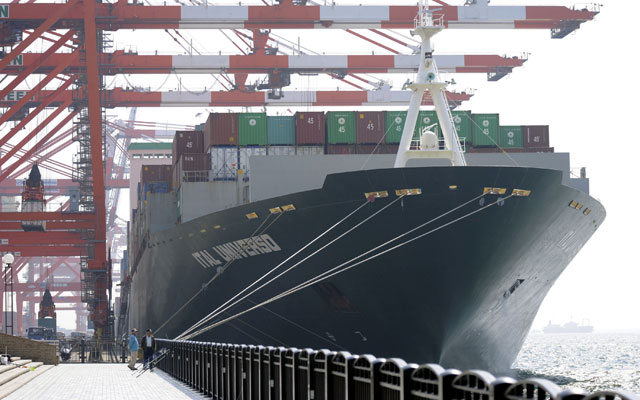Port Security: Prioritizing Technology and Funding
Brett Ramsay /
U.S. ports are thought to be secure from both radical transnational organizations and aggressive foreign nations, but, earlier this month, an unlocked door and surveillance equipment failures enabled a homeless man with “some mechanical aptitude” to commandeer a 132-foot yacht in Seattle, Washington. This incident highlights the need to strengthen U.S. port security in the face of traditional and 21st-century threats.
Maritime transportation is a vital component of the U.S. economy. U.S. ports move over two billion tons of cargo annually, a number that will likely increase when the Panama Canal’s expansion is completed in 2015. As the flow of goods and capacity increase, vulnerability will also increase along the entire American coastline.
U.S. maritime assets face numerous traditional challenges including smuggling, volatile weather, and internal corruption. One of the most pressing security concerns since 9/11 has been terrorism. With this in mind, the U.S. government has instituted measures to prevent a terrorist attack through cargo shipments, such as the U.S. Customs and Border Patrol’s risk-based Customs-Trade Partnership Against Terrorism. More risk-based programs—rather than unrealistic mandates—are needed to build an effective homeland security strategy.
The first Quadrennial Homeland Security Review recognized the need to safeguard the way U.S. citizens’ interact with the world. Homeland security and continued prosperity necessarily demand an all-inclusive approach to U.S. port security.
Adapting port infrastructure to 21st-century threats is a necessary step not only in securing public safety, but also in securing economic vitality. In 2011, organized criminals in Antwerp utilized sustained cyber attacks to breach port security. After infiltrating the port’s IT system, they were able to locate and steal cargo containing hidden illicit material before the legitimate freight owners or customs authorities arrived. With the proliferation of cheap cyber abilities, the Port of Long Beach’s director of security warns a successful cyber attack on the ports of Los Angeles and Long Beach would likely cost $1 billion per day.
In response to these changing threats, U.S. ports—namely Baltimore and Los Angeles—are preparing. The federal government, however, has not prioritized port security as it should. The Coast Guard is an integral cog in port order and security and requires increased funding for readiness and vessel modernization. Congress should ensure that the Coast Guard has the resources necessary to fulfill its mission of protecting America’s shores.
The use of cyber attacks to bypass normal screening and pick-up procedures at shipyards further displays the futility of the current 100 percent cargo screening mandate. Instead of creating a backlog of cargo shipments, Congress should instead update cargo screening requirements based on high-risk manifests and other data triggers.
As transportation security is one of the main focuses of the Department of Homeland Security (DHS), Congress and DHS Secretary nominee Jeh Johnson should carefully consider all of the critical threats facing American maritime security.
Brett Ramsay is currently a member of the Young Leaders Program at The Heritage Foundation. For more information on interning at Heritage, please click here.

